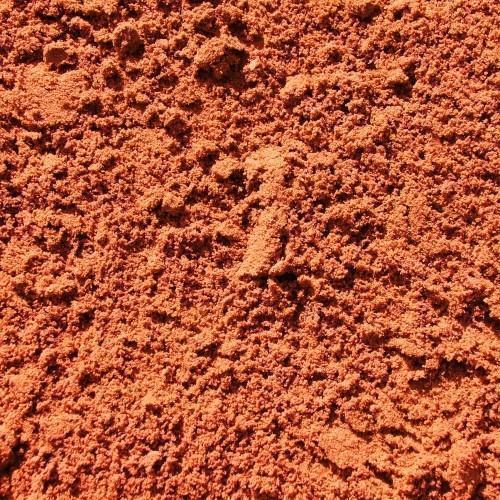How is red mud produced? What is the difficulty of comprehensive utilization?
Red mud is the polluting waste residue discharged from the production of alumina by the Bayer process (currently 95% of alumina is produced by the Bayer process). Generally, for every ton of alumina produced, 1.0 to 2.0 tons of red mud is produced incidentally. Generally, it contains a large amount of iron oxide, and its appearance is similar to that of red soil, hence the name.
Red mud contains a variety of trace elements, and the radioactivity mainly comes from radium, thorium and potassium. Generally, the whiteness index of internal and external illumination is above 2.0.

How is red mud produced?
After the bauxite is dissolved, a mixed slurry of red mud and sodium aluminate is formed. The slurry must be diluted to settle or filter to separate the red mud and sodium aluminate solution. After separation, alumina and red mud are produced from the sodium aluminate solution. It needs washing to reduce the loss of Na2O and Al2O3 through the red mud attachment.
Factors affecting the sedimentation and separation of red mud
1. The form of minerals
The composition and chemical composition of bauxite are the main factors affecting the settlement and compressibility of red mud slurry. The inclusion of pyrite, pyrite, goethite, kaolinite and other minerals in bauxite can reduce the sedimentation rate of red mud because they contain more Al(OH)4-, OH-, Na+ and water molecules; However, the red mud generated by hematite, siderite, magnetite, water green vanadium, etc. has less Al(OH)4-, OH-, Na+ and water molecules adsorbed, so it is conducive to sedimentation.
2. The dilution concentration of the dissolution slurry
At a certain temperature, the sodium aluminate solution with the same caustic ratio has high stability when the alumina concentration is lower than 25g/L or higher than 250g/L, while the medium concentration (70~200g/L) has high stability. Alumina solutions are less stable. Due to their stability, they cannot be decomposed directly.
3. The temperature of the diluted slurry
When the temperature of the diluted slurry increases, its viscosity and density decrease, so the sedimentation rate of red mud increases. The temperature at which the slurry is diluted greatly affects the stability of the sodium aluminate solution, resulting in changes in the amount of alumina lost in the red mud. As can be seen from the figure below, in order to maintain the stability of the sodium aluminate solution with a lower concentration and a low caustic ratio after dilution, the solution temperature must be increased to above 94 °C.
4. The use of flocculants
During the sedimentation and separation of red mud, it is generally necessary to add flocculants to improve the overflow quality of the sedimentation tank and the consistency of the bottom flow, increase the sedimentation speed, increase the production capacity of the sedimentation tank and reduce the production cost. Adding flocculants is a commonly used and effective method to accelerate red mud sedimentation in alumina production.
A good red mud flocculant should have the following conditions: good flocculation performance, low dosage and good water solubility; high clarity of the treated mother liquor, and organic matter remaining in the mother liquor will not affect the subsequent decomposition of aluminum hydroxide; the resulting The flocs can be subjected to shear force; after sedimentation and separation, the underflow sludge has good filtration and dehydration performance, and the filter cake is loose; the raw materials are widely sourced and the price is low. The currently used flocculants include sodium polyacrylate, polyacrylamide and the like.
Comprehensive utilization of red mud
At present, the research on comprehensive utilization of red mud mainly includes the following three aspects:
1. It is the extraction and recovery of valuable metals, such as leaching and precipitation to extract aluminum, magnetization roasting to select iron, and acid leaching to extract rare metals such as scandium, titanium, and vanadium;
2. It is the preparation of building materials, such as the preparation of unburned bricks and cement;
3. It is the preparation of adsorption materials, mainly used in wastewater treatment.
